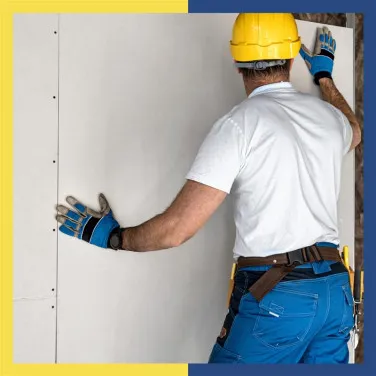Effective water tank leakage solutions to prevent damage
Find the best water tank leakage solution to fix cracks and prevent damage. Learn how to repair water tank leakage with expert tips and waterproofing methods.
Water tanks play a crucial role in every household, ensuring a continuous water supply for your daily needs. But what happens when you have to deal with water leakage from your tank? This often overlooked issue does not just cause serious structural damage to your home; it also poses health hazards to your family.
When your water tank faces leakages, quick action is essential to prevent long-term damage. This article explores the causes of concrete water tank leakage, practical solutions, and how water tank waterproofing techniques can help safeguard your home.
Why is water tank leakage a critical issue?
A leaking water tank can have far-reaching consequences beyond just water wastage. Some of its effects include –
- Structural damage –
Leaks can weaken the steel reinforcements in concrete, leading to corrosion and potential failure.
- Water contamination –
Damaged coatings in a leaking tank can allow harmful substances from concrete to seep into the water, making the household supply unsafe for consumption.
- Aesthetic deterioration –
Water leakage can lead to damp patches, efflorescence, and peeling paint, compromising the appearance of your home.
- Electrical hazards –
Overhead tank leaks can seep into ceilings and walls, posing the risk of electric shocks and damaged electrical appliances.
- Costly repairs –
Ignoring leaks can lead to extensive damage, resulting in expensive repairs.
- Roof leakage –
Leaking concrete water tanks are a leading cause of roof seepage, creating persistent dampness and structural issues
Common causes of water tank leakage
Several factors contribute to tank water leakage, especially in Indian homes exposed to diverse climatic conditions. Some examples include –
- Poor concreting practices –
Use of low-quality concrete, improper mixing, or inadequate curing creates weak spots and cracks that allow water to seep through.
- Material degradation –
Concrete tanks with steel reinforcements are prone to corrosion if not waterproofed correctly.
- Hydrostatic strain –
The continuous pressure exerted by stored water places constant stress on the tank’s structure; any weakness in the concrete can compromise its quality and lead to leakage.
- Temperature fluctuations –
Overhead water tanks exposed to daytime heat and nighttime cooling undergo repeated expansion and contraction, creating cracks in the concrete over time.
Overhead water tank leakage problems and solutions
Overhead tanks are constantly exposed to environmental factors such as heat, rain, and fluctuating water levels.
Some of the common problems with overhead tank leaks include –
- Ceiling and roof damage –
Leaks can cause damp patches, weakening the roof structure over time.
- Algae and mould growth –
Water tank leakage encourages algae and mould formation on the outer surface, which deteriorates both the appearance and durability of the structure.
- Electrical issues –
Seepage can affect wiring, causing short circuits and potential safety risks.
If you are struggling with water leakage, some effective overhead concrete water tank leakage solutions include –
- Choose professional waterproofing solutions –
Apply high-performing water tank waterproofing solutions, such as Dr. Fixit Fastflex, to ensure long-term protection.
- Annual inspections –
Regular maintenance helps detect early signs of leakage before they escalate.
- Pre-monsoon checks –
Inspecting tanks before the rainy season helps identify and fix leaks early, preventing them from worsening with heavy rainfall.
- Internal slope and drainage –
Ensuring a gentle slope inside the tank prevents water stagnation and seepage during drainage and cleaning.
Underground water tank leakage problems and solutions
Underground tanks are susceptible to water leakage due to pressure and external moisture intrusion.
Some of the problems caused by underground tank leaks include –
- Seepage from groundwater –
High underground moisture levels increase the risk of tank seepage.
- Difficult repairs –
Since one side of the tank is in direct contact with soil, repairing leaks becomes challenging and often leaves no permanent solution.
- Water contamination –
Cracks or leakage can allow muddy water and impurities to seep in, contaminating the stored water.
- Soil infiltration –
Harmful contaminants from surrounding soil can enter the tank through leakage, further compromising water quality.
The best underground water tank leakage solutions to help tackle these issues include –
- Applying a cementitious waterproofing solution –
Using the best waterproofing chemical for water tanks, such as those offered by Dr. Fixit, protects against leakage and structural damage.
- Inspection every six months –
Underground tanks are difficult to access, making damage easy to miss, which is why frequent inspections are necessary.
- Proper cleaning –
Removing sediment buildup prevents blockages and enhances durability.
How to repair a water tank leakage
Quick fixes can prevent further damage for minor leaks until a permanent water tank leakage solution is implemented.
- Epoxy grouting injection –
These high-performance injections force the waterproofing liquid into even barely visible cracks, sealing the concrete water tank effectively to stop leakage.
- Polyurethane sealants –
These sealants are ideal for flexible joints and prevent leakage in concrete tanks.
- High-performance, water-resistant coating –
This solution works best for concrete tanks, reinforcing weak spots and cracks.
Water tank waterproofing: The best preventive measure
Preventing water leakage is always better than dealing with expensive repairs. The right water tank waterproofing methods can extend the life of your tank and home.
- Use high-quality waterproofing materials –
Investing in high-quality materials, such as Dr. Fixit Fastflex, which is a high-performance water tank waterproofing solution, ensures long-term protection.
- Ensure proper curing time –
Waterproofing chemicals require adequate curing to be effective. You can also use halogen lamps inside your water tank to accelerate the curing process.
- Hire professionals –
While DIY repairs may provide temporary relief, expertly trained waterproofing professionals certified by Dr. Fixit ensure durability and precision. Besides, DIY repairs increase the chances of accidents and inefficient application.
A protected tank leads to better health and better homes
A proactive approach to water tank leakage solutions can prevent extensive damage, reduce repair costs, and ensure a clean, safe water supply. Whether you are looking for overhead or underground water tank leakage solutions, timely action can make a big difference.
For expert assistance, choose Dr. Fixit’s water tank waterproofing solutions and safeguard your home from the risks of water leakage. Fill out the form given below to reach out.
Get Professional Waterproofing Solutions Today
Fill The Form below to took free site evaluation by Dr. fixit point safe painting service expert
Get Professional Waterproofing Solutions Today
Fill The Form below to took free site evaluation by Dr. fixit point safe painting service expert





